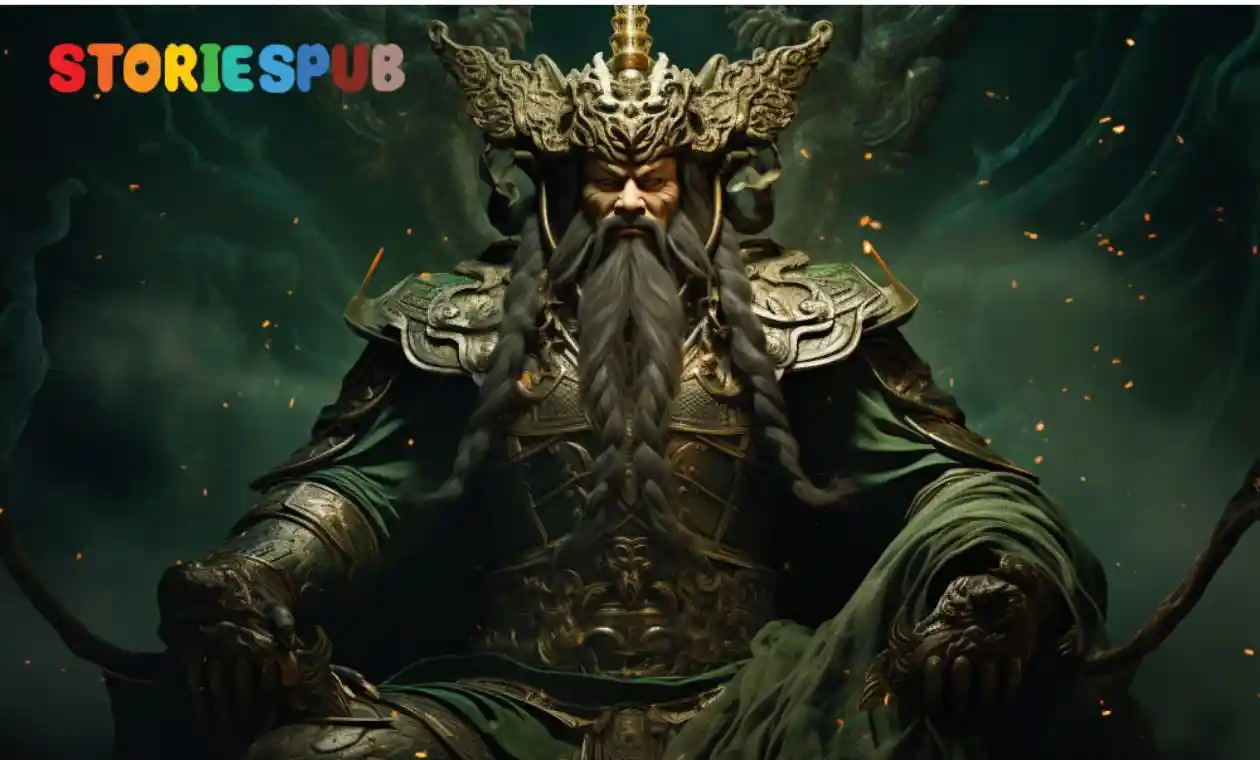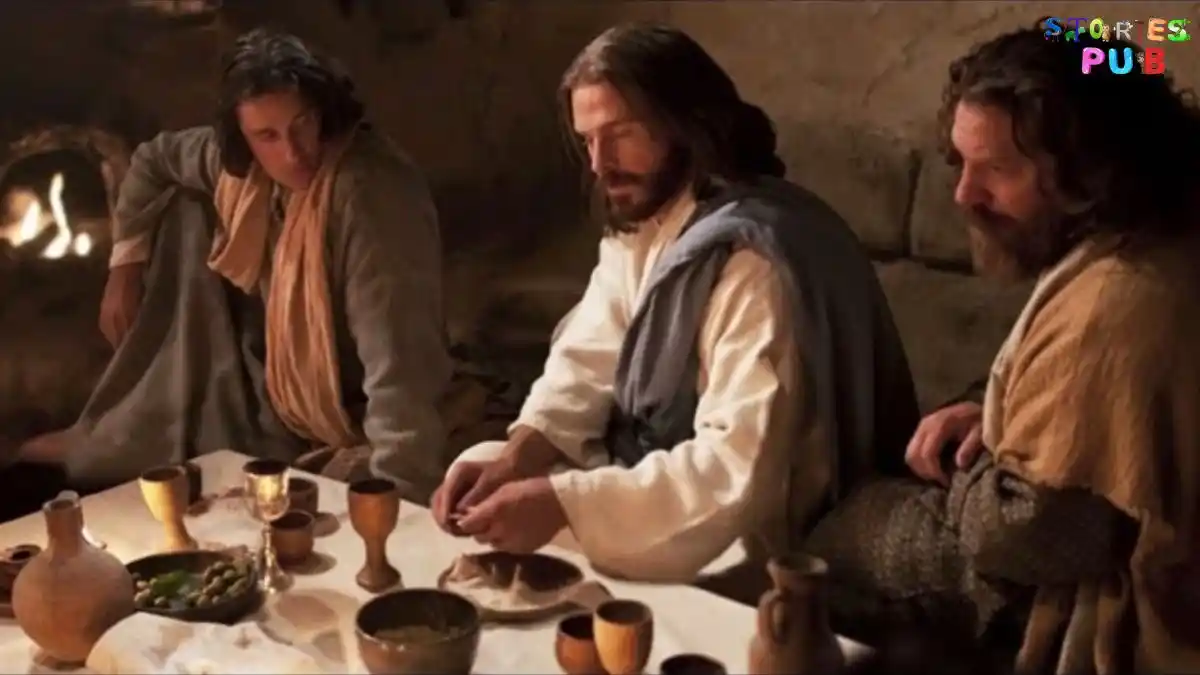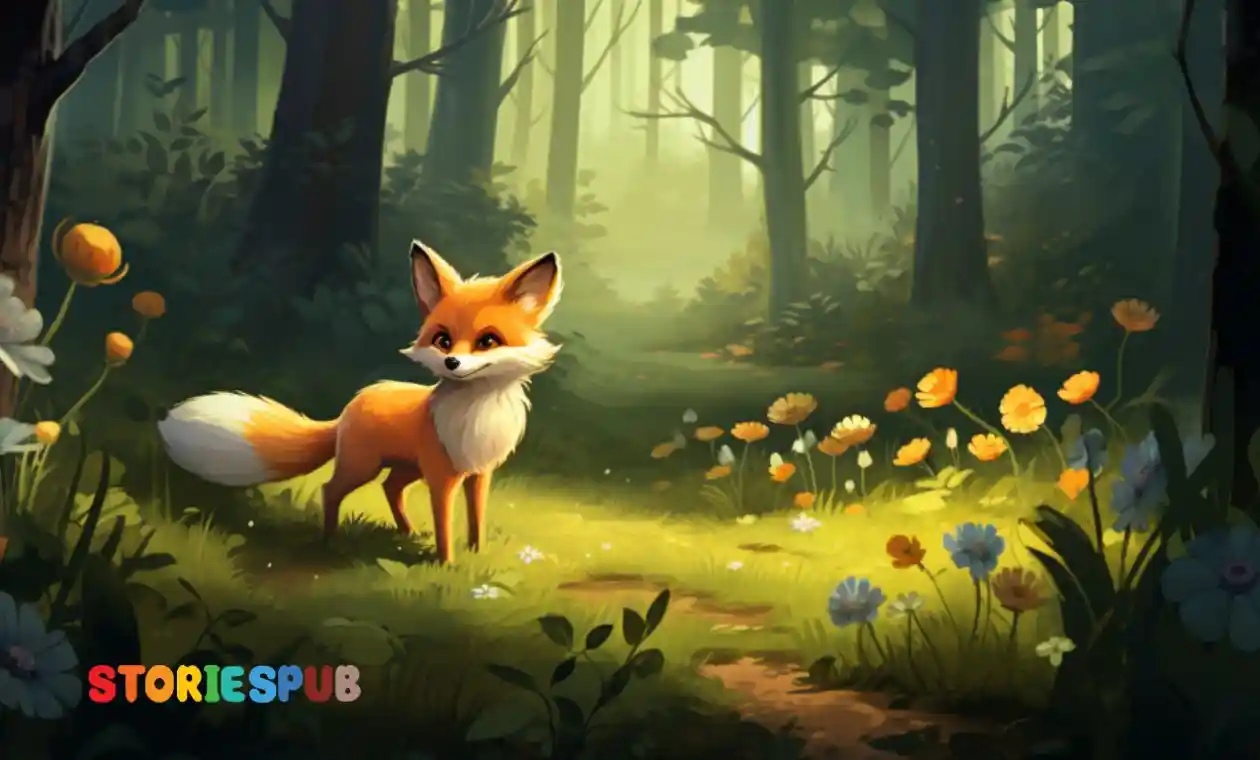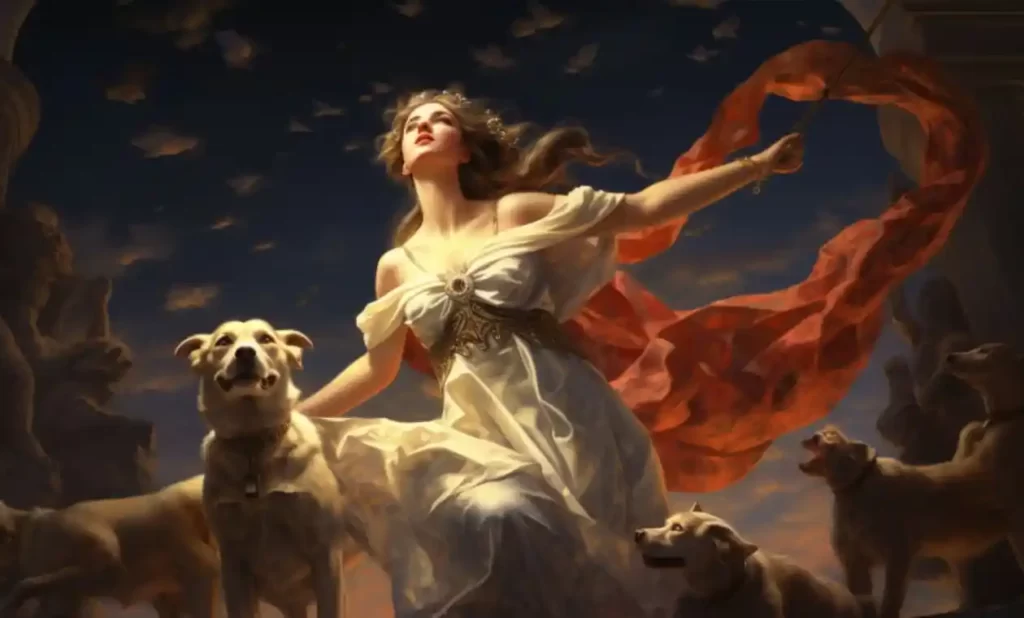
Dive deep into the world of Diana, Rome’s moon goddess and huntress. From ancient myths to modern art, discover her enduring legacy.
In the vast and intricate world of Roman mythology, a few figures stand out with an aura that manages to be both ethereal and commanding, and Diana is undoubtedly one of them. As tales of ancient gods and goddesses have been passed down through generations, the legend of Diana has been one that has consistently captivated the minds of scholars, artists, and the common man alike.
Diana, often seen with a silver crescent moon crowning her head and a quiver slung over her shoulder, embodies the raw power of nature and the mysteries of the night. As a lunar deity, she reigns over the night sky, bathing the world below in a soft, silvery glow. But there’s another facet to her persona: that of a huntress. Swift, silent, and deadly, she roams the wild forests, not just as a predator, but as a protector. This dual role, of both moon goddess and huntress, forms the core of her character, making her one of the most multifaceted deities in the Roman pantheon.
In the subsequent sections, we will embark on a journey through ancient Roman forests, under the moonlit sky, to unravel the enigma that is Diana – exploring her tales, her symbols, and her enduring legacy.
Diana in Roman Mythology: A Deeper Dive
The Enigmatic Diana
In the vast expanse of Roman mythology, where gods and goddesses command the cosmos and manipulate the fates of mortals, Diana emerges not just as another deity but as a symbol of nature’s untamed spirit. To understand her essence, we must first address a fundamental question: Who was Diana in Roman mythology?
Diana: The Multifaceted Deity
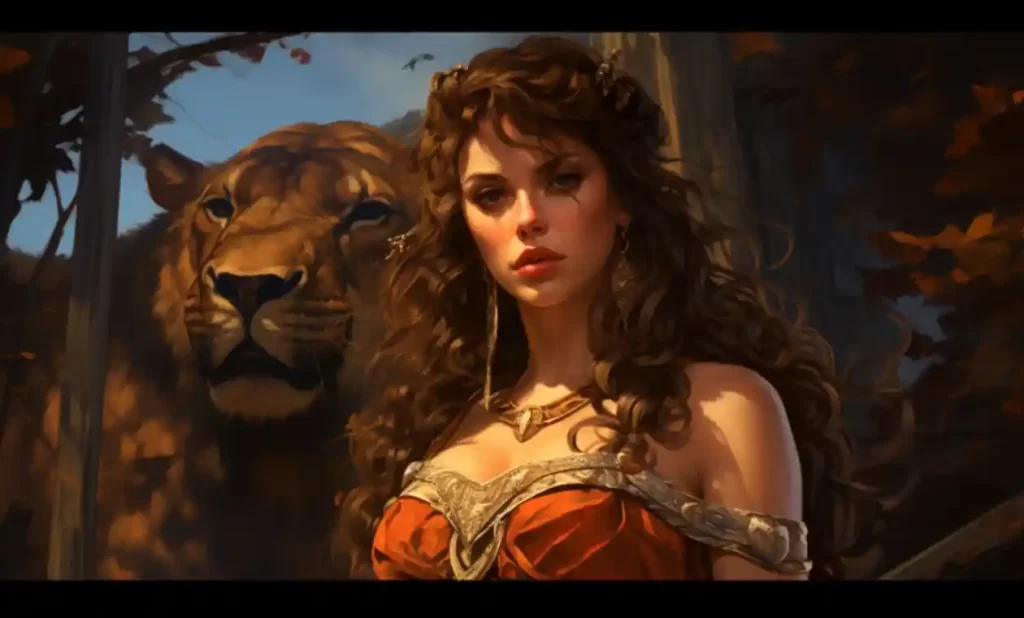
Diana wasn’t merely a goddess; she was an embodiment of various elements that resonated deeply with the Roman populace. Central to her identity was her dominion over hunting. As the goddess of the hunt, Diana was often portrayed with a bow and arrows, ready to strike down her prey. Yet, her relationship with the wilderness was not just that of a predator. Diana’s role was twofold: she hunted, yes, but she also protected. She was the guardian of animals, ensuring that the balance of nature was maintained. Ancient Roman tales often spoke of her roaming the forests with her entourage of nymphs, watching over all creatures great and small, ensuring that while the circle of life and death continued, no species was ever brought to the brink of extinction by unchecked hunting.
But the wilderness wasn’t the only realm she ruled. Diana also stood as the protector of young girls. In a society where gods were often invoked for specific life stages or events, Diana’s protective aura was sought by girls on the cusp of womanhood. She represented the fierce independence and strength that these young girls aspired to embody as they transitioned into adulthood.
Furthermore, Diana’s influence wasn’t restricted to the living realm alone. She was also revered as the goddess of childbirth, a beacon of hope and strength for expectant mothers. In an age where childbirth was fraught with danger and uncertainty, invoking Diana’s name was a plea for her protection and a safe delivery.
Apollo’s Twin: A Bond Beyond Mortality
One cannot explore Diana’s story without delving into her relationship with Apollo, her twin brother. Born to Latona and Jupiter, Diana and Apollo were inseparable from birth. However, their domains were as contrasting as the sun and the moon. While Apollo, the sun god, stood for light, music, and prophecy, Diana, as we’ve established, was the moonlit guardian of the night and the wilderness.
Their bond was a testament to the duality of nature and existence. Day and night, sun and moon, male and female – Apollo and Diana symbolized these dichotomies. Yet, they were never at odds. Instead, they complemented each other, ensuring the smooth functioning of the world. Their stories, while distinct, often intersected, showcasing the profound connection they shared.
A Pillar of the Roman Pantheon
Diana wasn’t just another deity in the vast Roman pantheon; she was one of its pillars. Her widespread worship was evident in the numerous temples dedicated to her across the Roman Empire. From the heart of Rome to its farthest provinces, altars were erected in her name, and festivals celebrated her glory.
The significance of Diana can also be gauged by the integration of her tales with Roman history. Legends speak of how she saved the early Romans, guiding and guarding them through perilous times. Her narratives were not just tales of a goddess but were interwoven with the very fabric of Rome’s identity.
Diana and Artemis: A Comparative Look
When Cultures Collide: The Tale of Two Goddesses
The ancient world was a vast tapestry of cultures and beliefs, and among them, the Romans and Greeks stood as two dominant forces. Both civilizations, with their rich mythologies, have left an indelible mark on human history. It’s no surprise, then, that there were overlaps, adaptations, and appropriations. At the heart of this cultural exchange stands the tale of two goddesses: Diana of the Romans and Artemis of the Greeks.
The Core Essence: A Shared Legacy
At first glance, Diana and Artemis might seem interchangeable. Both are depicted as young, fierce virgin huntresses, often accompanied by a group of nymphs or animals. Both wield a bow and arrow with unmatched skill, and both preside over the wilderness and its creatures. The moon, too, is a domain shared by them, casting them as guardians of the night. The bond between Diana and Apollo in Roman mythology mirrors the closeness of Artemis and Apollo in Greek tales, with both pairs representing the duality of the moon and the sun.
Given these core similarities, it would be easy to think of Diana as a mere replica of Artemis, a transplantation of the Greek goddess into Roman soil. But to do so would be an oversimplification. For, while the foundation is shared, the structures built upon them in the two cultures have their own unique designs.
Diana vs. Artemis: The Nuanced Differences
The first point of divergence between Diana and Artemis is their origin stories. Artemis, in Greek mythology, was born on the island of Delos, along with her twin brother, Apollo. Their birth was anything but ordinary. Their mother, Leto, cursed by the jealous Hera, wandered the earth, seeking a safe place to give birth. Delos provided that refuge. Artemis was born first and then assisted her mother in delivering Apollo, establishing her connection to childbirth.
Diana’s birth narrative, while similar in players, is Romanized. In Roman tales, Diana and Apollo are the children of Latona and Jupiter. Latona, much like Leto, was hounded by Juno (the Roman counterpart to Hera). She gave birth on the floating island of Ortygia, which later became fixed as Delos.
Another difference is their spheres of influence. While both goddesses are associated with the wilderness and the moon, Artemis has a deeper connection to mountains and the frontier spaces of the wild. Diana, on the other hand, has a more extensive association with woodland areas and clearings.
Cult practices also varied. Artemis’ temple at Ephesus, one of the Seven Wonders of the Ancient World, highlighted the goddess’s Eastern influences and showcased her as a multi-breasted fertility figure. This is a stark contrast to the Roman perception of Diana, who, while associated with childbirth, wasn’t seen as a fertility goddess in the same sense.
Cultural Contexts: Shaping Deities

The differences between Diana and Artemis aren’t arbitrary. They’re born from the unique cultural, historical, and geographical contexts of the Romans and Greeks.
Greece, with its rugged landscapes, islands, and mountainous terrains, naturally painted Artemis as a goddess of the highlands. Rome, with its vast woodlands and emphasis on urban development (which often led to clearing of forests), perceived Diana as the guardian of these diminishing wild spaces.
Furthermore, while both cultures valued the idea of virginity in goddesses as a symbol of autonomy and power, the Greeks had a more complex tapestry of virgin goddesses, including Athena and Hestia. Artemis, thus, was one among peers. In Roman culture, Diana stood out more prominently in her virgin aspect, given the pantheon’s different dynamics.
In Conclusion: Sisters, Not Twins
Diana and Artemis, while sharing a foundational legacy, evolved differently in their respective cultures. To the casual observer, they might seem like mirrored reflections, but a deeper dive reveals the nuances that make each goddess unique. They are a testament to how two cultures, while drawing from a shared source, can craft narratives that resonate uniquely with their values, geography, and historical contexts.
Symbolism and Diana: Decoding the Emblems of the Huntress
Introduction: The Power of Symbols
Every culture, every era, and every deity carries symbols—potent representations that transcend mere imagery. These symbols weave stories, beliefs, and values into a visual shorthand. When it comes to Diana, the Roman goddess of the moon and the hunt, her associated symbols aren’t just decorative elements; they serve as windows into her very essence, her tales, and her significance in Roman mythology. So, what symbols are intricately tied to this enigmatic goddess?
The Bow and Arrow: Tools of the Protector and Predator
Diana’s most iconic symbols are her bow and arrow. These aren’t just weapons; they’re extensions of her very being. In the silent realms of the vast Roman forests, where the lines between predator and prey blur, Diana stands with her bow drawn, ready to strike. But her intentions are twofold.
As the goddess of the hunt, she uses her arrows to pursue game. This act isn’t just about the thrill of the chase but rather a deep respect for the balance of nature. But the bow and arrow also symbolize her role as a protector. She safeguards the wilderness, its creatures, and particularly young girls transitioning to womanhood. In many tales, those who threaten this balance or innocence find themselves on the receiving end of her deadly aim. The story of Actaeon, who stumbled upon Diana bathing and was turned into a stag and subsequently torn apart by his own hounds, is a chilling testament to her protective fury.
The Moon: Guardian of the Night
Casting a silvery glow across the nocturnal landscapes, the moon is another emblem closely tied to Diana. As a lunar deity, she embodies the various phases and mysteries of the moon. But why the moon? In ancient belief systems, the moon was seen as a reflection of the cyclical nature of life. It waxes and wanes, just like the ebb and flow of tides, the transition from life to death, and rebirth.
Diana’s connection to the moon also emphasizes her role in the mysteries of femininity, particularly childbirth and the journey from girlhood to womanhood. It represents her dual nature: soft and nurturing, yet fierce and unpredictable, much like the moonlit night itself.
Deer: The Graceful Wanderer
The deer, especially the doe, is a creature that often finds itself associated with Diana. This graceful animal, often seen wandering the forests, is a symbol of innocence, purity, and vulnerability. Diana’s role as the protector of the wilderness and its creatures is encapsulated in her bond with the deer. The deer also symbolizes her virgin aspect—a creature untouched, wild, and free, resonating with Diana’s own fierce independence.
Hunting Dogs: Companions of the Chase
In many depictions of Diana, she is accompanied by hunting dogs. These loyal companions are not just tools for the hunt but represent the primal, raw, and untamed aspects of nature that Diana governs. Dogs, with their keen senses and instincts, mirror Diana’s own sharp intuition and her deep connection with the wild. They also serve as reminders of her protective nature, emphasizing loyalty and vigilance.
Connecting Symbols to Mythology
The tales of Diana are not just stories; they’re narrative tapestries where her symbols play pivotal roles. Whether it’s the story of her vengeance on Actaeon, her adventures with her nymph companions, or her protective nature towards the vulnerable, each symbol lends depth to her character. They aren’t mere accessories but are instead keys to understanding her complexities.
Diana’s World in Symbols
To the uninitiated, Diana’s symbols might seem like mere artistic choices. But delve deeper, and they unravel layers of meaning, tales of adventure, and insights into ancient Roman beliefs. Through her bow and arrow, the moon, deer, and hunting dogs, we get a glimpse into the world of Diana—a realm where the wilderness reigns supreme, and the mysteries of nature are both celebrated and revered.
The Enigma of Diana’s Chastity: Beyond Purity and Power
Introduction: Challenging the Stereotype
When one speaks of virginity, especially in the context of ancient mythology, a singular narrative often takes precedence—purity. But purity, in the context of Diana, the formidable goddess of the Roman pantheon, is just the tip of the iceberg. Her virginity is an intricate weave of autonomy, authority, and allegiance. So why was Diana hailed as a virgin goddess, and what nuances did this title carry?
The Root of Virginity: Not Just a Physical State
To comprehend Diana’s virginity, one must first decouple the term from its modern connotations. In ancient Roman culture, “virginity” wasn’t just a reference to physical purity but encompassed a broader spectrum of independence and autonomy. A virgin was often seen as a woman untouched by the bonds of marriage and childbearing, free from the constraints that often accompanied these roles.
In Diana’s narrative, her virginity symbolizes this unparalleled freedom. She roamed the wild forests, led her nymphs, and hunted without being bound by the traditional roles that other female deities often found themselves in. This wasn’t a mere rejection of partnership or motherhood but a choice of autonomy, authority, and self-determination.
A Vow of Chastity: The Symbolism of Dedication
Delving deeper into the mythology surrounding Diana, one finds tales of her taking explicit vows of chastity. This wasn’t a mere refusal of intimacy but was a testament to her dedication to her role as the guardian of the wilderness, animals, and young girls. The vow was a symbolic act—a conscious decision to remain undistracted, to put her duties above personal desires.
One might argue that such a choice seems restrictive. But in Diana’s world, this wasn’t a sacrifice but an assertion. It was her way of emphasizing her priorities, showcasing that her realms of influence—nature, animals, and young girls—were of paramount importance.
Diana’s Fierce Independence: A Role Model for Many
The tales of Diana resonate with fierce independence. Whether it was her handling of Actaeon, who faced her wrath for violating her privacy, or her interactions with other deities, she consistently championed her autonomy. She didn’t just embrace her independence; she celebrated it, becoming a beacon for those who sought to live life on their terms.
This portrayal was especially poignant in a pantheon and culture where many goddesses had complex relationships with their male counterparts. While figures like Venus had intricate romantic narratives, Diana’s stories revolved around her adventures, her protectiveness, and her dominion over her chosen realms.
A Virgin Goddess in the Roman Pantheon: Standing Apart
Diana’s title as a virgin goddess set her apart in the Roman pantheon. While virginity was celebrated in various forms—with figures like Vesta, the goddess of the hearth, also embodying it—Diana’s virginity was unique. It was active, dynamic, and intertwined with her very essence.
It also offered a counter-narrative to the tales of other deities. In a pantheon filled with stories of romantic pursuits, betrayals, and passions, Diana’s tales were refreshingly different. They weren’t devoid of emotions but showcased a different spectrum—love for nature, dedication to duty, and the joys of unbridled freedom.
Diana’s Chastity—A Multifaceted Jewel
The enigma of Diana’s chastity is a journey into the heart of ancient Roman beliefs, cultural narratives, and the ever-evolving concept of freedom. It’s a reminder that labels, especially when it comes to deities, carry depths that often remain unexplored. In Diana, the Roman pantheon found not just a virgin goddess but a symbol of fierce autonomy, unwavering dedication, and the unparalleled power of choice.
The Temple of Diana at Nemi: A Sacred Sanctuary
Introduction: Echoes of Ancient Rituals Amongst Whispering Trees
Nestled by the serene Lake Nemi and surrounded by thick, whispering forests, the Temple of Diana at Nemi stands as a testament to the ancient world’s veneration of the goddess of the hunt and the moon. Beyond the sturdy pillars and the now-weathered stones, the temple harbors stories and rituals, some of which are steeped in mystique and others in the brutal reality of a bygone era. What made this temple so significant, and why did it become the focal point for one of the most intriguing rituals of ancient Rome?
The Heart of Worship: The Temple’s Significance
The Temple of Diana at Nemi wasn’t just a structure; it was a symbol. Located amidst wild woods, it beautifully encapsulated Diana’s essence as the guardian of nature. Its location by the lake added an element of serenity, perhaps reflecting her lunar associations—just as the moon reflects upon calm waters.
Diana was venerated throughout the Roman empire, but this temple held particular importance. It wasn’t just a place of worship but was a destination for pilgrimages, a center for rituals, and a space where the boundaries between the mortal realm and the divine seemed to blur.
Rex Nemorensis: The Ritual of the King of the Wood
One of the most intriguing and somewhat brutal rituals associated with the temple was that of the “Rex Nemorensis” or the “King of the Wood.” This wasn’t a title easily earned or retained. The reigning Rex Nemorensis was a priest of Diana, but his tenure was always under threat. If a slave could break a branch from the sacred grove’s trees and then defeat the reigning priest in combat, he would assume the title. This ritual of combat was a reflection of the harsh reality of nature—where survival often depended on strength and wit.
The origin of this ritual is shrouded in mystery. Some believe it was a representation of the cyclical nature of life and death in nature, where old gives way to the new. Others speculate it may have roots in older pagan traditions, which were then incorporated into the worship of Diana.
The Enigmatic Wild Forests: Nature’s Embrace
The temple’s proximity to the dense, wild forests was no architectural accident. These woods were the realm of Diana. They represented everything she stood for—the untamed, the mysterious, and the primal. Worshippers, upon entering this sacred space, were stepping into Diana’s domain, surrounded by the very elements she governed.
The forests were more than just a scenic backdrop; they played a pivotal role in the temple’s rituals. The very act of breaking a branch for the Rex Nemorensis challenge, for instance, was deeply symbolic, representing both the bounty and the ruthlessness of nature.
The Golden Bough: A Symbol of Authority and Transition
The Golden Bough is a symbol intricately tied to the temple and its rituals. Often believed to be the very branch a contender needed to break to challenge the Rex Nemorensis, the Golden Bough represented authority, transition, and the delicate balance of life and death.
Its significance was so profound that it inspired works beyond religious texts, notably Sir James Frazer’s anthropological study “The Golden Bough.” For many, this symbol represented not just the power dynamics at the temple but the broader themes of sacrifice, renewal, and the cyclical nature of existence.
The Temple’s Timeless Allure
The Temple of Diana at Nemi, with its tranquil setting and intense rituals, offers a paradoxical blend of serenity and violence, reflection and challenge. More than just stones and pillars, it’s a portal to understanding the complex tapestry of ancient Roman religious practices, the reverence for nature, and the ever-present dance of life and death. To speak of this temple is to traverse through tales of ambition, reverence, and the eternal pull of the wild—a journey that, much like the goddess it honors, is both enigmatic and profound.
Mythological Interactions and Tales
Introduction: Not Just a Moonlit Silhouette
Behind the veil of night, silhouetted by the soft glow of the moon, Diana, the Roman goddess of the hunt and wilderness, weaves stories that have captivated generations. She isn’t just a deity confined to her lunar realm or the dense woods; her narrative tapestry is interlaced with encounters with other mythological figures, revealing the multifaceted nature of her divinity. How did Diana, known for her fierce independence, interact with her peers, and what tales have sprouted from these encounters?
Meeting Mortals: The Tragic Tale of Actaeon
Among the most well-known interactions Diana had was with Actaeon, a mortal hunter. This story serves as a cautionary tale about respect, boundaries, and the dire consequences of crossing them. Actaeon, during one of his hunts, stumbled upon Diana bathing in a secluded woodland pool. The mere act of laying eyes on the goddess in such a vulnerable state was a grave transgression.
Diana, in her fury and to ensure her privacy wasn’t violated further, transformed Actaeon into a stag. The irony of this transformation wasn’t lost: Actaeon, once the hunter, became the hunted, as he was chased and eventually torn apart by his hounds. This story doesn’t just highlight the sanctity of personal boundaries but also emphasizes Diana’s inherent power and the swift justice she metes out to those who err.
Stars and Stories: Diana and Orion
Diana’s relationship with Orion is a narrative filled with passion, camaraderie, and tragedy. Orion, a giant and a formidable hunter himself, shared a deep bond with Diana. Some versions suggest a blossoming romance, while others lean towards a platonic friendship. However, all tales agree on one point: their bond was profound.
Yet, like many Greek and Roman mythological narratives, their story didn’t have a happy ending. Orion’s death is attributed to various reasons in different versions—some say he was stung by a giant scorpion, others claim it was a tragic accident by Artemis (or Diana in the Roman context), and yet others hint at a plot by Apollo, who disapproved of their relationship. Regardless of the cause, Orion’s passing deeply affected Diana. In her grief and to honor their bond, she placed him among the stars, ensuring his legacy as a constellation, forever shining brightly.
Guardian of Nymphs: Diana’s Sisterly Bond
Diana wasn’t always engaged in tumultuous interactions. Her relationship with nymphs is a testament to her protective, nurturing side. Nymphs, often seen as minor deities of nature, found a guardian in Diana. She would often be accompanied by them, especially during her hunts.
One poignant tale revolves around the nymph Callisto, a companion of Diana. Callisto caught the eye of Jupiter, and after an encounter with him, she became pregnant. This violated the vow of chastity she had taken as one of Diana’s nymphs. When Diana discovered this, Callisto was banished, and she later transformed into a bear. Years later, in a tragic twist, Callisto, in her bear form, came face to face with her son Arcas. To prevent a heartbreaking conflict, Jupiter placed them in the sky as the constellations Ursa Major and Ursa Minor. The tale is a reflection of the complexities of personal choices, societal judgments, and the unintended consequences that often accompany them.
Diana’s Multifaceted Mythos
Diana’s interactions in mythological tales offer a spectrum of emotions, from fierce retribution and deep sorrow to unyielding loyalty and protectiveness. These stories are not just about gods and mortals; they delve deep into the intricacies of relationships, the challenges of choice, and the relentless march of fate. Diana, through these narratives, emerges not just as a moon goddess or a formidable huntress, but as a deity whose stories resonate with timeless human emotions and dilemmas.
Celebrating Diana: Nemoralia and Other Festivals
Introduction: Reveling under the Moonlit Sky
The annual rhythms of ancient Rome were punctuated by an array of festivals, each celebrating various deities, seasons, and historical events. Among these myriad celebrations, those dedicated to Diana, the huntress and moon goddess, held a unique charm. Under the luminescent glow of the full moon, Romans came together, not just to venerate Diana’s power and grace, but to revel in the mystical ambiance that these festivities conjured. So, how exactly did the Romans celebrate their beloved moon goddess?
Diana’s Day on the Roman Calendar
Yes, Diana, with her significant place in the Roman pantheon, had special days dedicated to her. While she was honored in multiple smaller rituals throughout the year, her most prominent celebration was the festival of Nemoralia. This day, more than any other, encapsulated the reverence, admiration, and awe that the Romans held for their moon goddess.
Nemoralia: The Festival of Torches
Often referred to as the ‘Festival of Torches,’ Nemoralia was celebrated on the Ides of August, which usually fell on the 13th. Its timing was deliberate, coinciding with the brightest full moon of the year, which was considered Diana’s own.
Nemoralia wasn’t just an urban festival; it spanned the vast expanse of the Roman empire. Its most significant celebrations were held at the Temple of Diana in Nemi, sometimes called “Diana’s Mirror” due to its proximity to the reflective Lake Nemi. Devotees from far and wide would make pilgrimages to this sacred site to offer their respects.
The customs of Nemoralia were deeply symbolic. As dusk settled, devotees would light torches and candles, illuminating the night in Diana’s honor. These flickering lights, mirroring the shimmering moon above, were paraded in grand processions. They served dual purposes: as offerings to Diana and as symbolic representations of her radiant lunar energy.
But Nemoralia wasn’t all solemnity. Women, especially, took the opportunity to pay homage to Diana by wearing wreaths made of flowers, while others released intricate clay images of deer (Diana’s sacred animal) into water bodies. The waters, reflective like the moon, would carry these offerings, symbolizing the devotees’ prayers and wishes reaching the goddess.
Nemoralia’s Deep-Rooted Significance
Beyond the luminescent processions and symbolic offerings, Nemoralia was steeped in deeper spiritual connotations. Diana was not only the goddess of hunting and the moon but also the protector of the young. This festival, therefore, was especially significant for women and children. It was a time to pray for fertility, safety during childbirth, and the overall well-being of one’s family.
Nemoralia also echoed the themes of rejuvenation and protection. The ritualistic act of laying wreaths or garlands on the sacred groves and at the altars of Diana was a plea for her protection over the coming year, both for the individual and the broader Roman community.
Evolution of Diana’s Depiction Through the Ages
From Frescoes to Film
The enduring allure of Diana, the goddess of the hunt and the moon, spans millennia. As with most mythical figures, Diana’s depiction has been in constant flux, reshaped by the brushstrokes of artists, societal values, and cultural evolution. By tracing the representation of Diana through time, we don’t just witness her transformation; we glimpse into the ever-evolving psyche of human societies.
Diana in Ancient Rome: Marble and Frescoes
In the heartland of the Roman Empire, Diana’s image was ubiquitous. She was typically portrayed as a young, athletic woman, often with a hint of androgyny, reflecting her fierce independence and her role as a huntress. Dressed in a short tunic, with her legs bared for ease of movement in hunting, she was an epitome of both beauty and strength.
Key to her ancient representations were the symbols that accompanied her. On sculpted marbles and frescoes, she was frequently seen with a bow and quiver, her faithful hounds, or beside a deer—her sacred animal. These visual cues solidified her identity for anyone gazing upon her image.
But the ancients didn’t just focus on her hunting prowess. In many mosaics, especially those found in private homes, Diana is shown in her lunar aspect, crowned with a crescent moon. These artistic choices reveal the duality of Diana’s worship as both a huntress and a moon goddess.
Renaissance Reimagining: Elegance and Ethereal Beauty
Fast forward to the Renaissance, a period known for its revival of classical art and literature. Here, Diana’s depictions undergo a significant shift. Renaissance artists, while drawing inspiration from classical sources, were also influenced by the changing societal values of their time.
In this era, Diana is often portrayed with more pronounced femininity and elegance. While her hunting attributes remained, artists like Titian and Correggio infused her with an ethereal beauty. One of the most iconic portrayals from this period is the painting “Diana and Actaeon,” where the goddess’s chastity and fury at being observed by a mortal man are vividly captured.
The Renaissance also saw a surge in portraying Diana’s narratives, with artists delving deeper into her myths, her interactions with nymphs, and her various exploits.
Modern Depictions: From Classical to Contemporary
Modern interpretations of Diana are as varied as the mediums they appear in. From films to literature to digital art, Diana’s essence is both preserved and reinvented.
In literature, Diana often symbolizes an unattainable woman, a beacon of independence and mystery. In cinema, she has been reimagined as everything from a superheroine to an environmental activist, reflecting contemporary society’s values and challenges.
Digital art and graphic novels, with their boundless scope for imagination, often blend Diana’s classical elements with futuristic or alternative aesthetics, offering a fresh perspective on this age-old goddess.
Influence of Societal Views and Cultural Shifts
The changing face of Diana over the ages is not merely an artistic evolution. Each era’s depiction reflects its societal norms, values, and challenges. While the Romans prized her as a symbol of wilderness and pure femininity, the Renaissance leaned into her ethereal beauty and divinity. The modern world, with its myriad challenges and narratives, reinvents Diana to resonate with contemporary themes of feminism, environment, and more.
Conclusion: Diana’s Enduring Legacy in Art and Culture
Diana: More Than Just a Goddess
At the heart of countless tales, frescoes, festivals, and sculptures, Diana stands as a symbol of strength, femininity, and natural balance. Her journey from the wild forests of ancient Rome to the modern galleries and screens attests to her perennial allure, proving that she is more than just a deity from Roman mythology. She is an idea, a sentiment, and an inspiration.
A Mirror to Society’s Evolution
As societies evolved, so did their interpretation of Diana. Every depiction, whether carved in marble, painted on canvas, or crafted in words, reveals the values, challenges, and aspirations of its era. She has been the fierce huntress, the ethereal moon deity, the protector, and the unattainable beauty. But more than that, she is a mirror reflecting how society perceives strength, autonomy, femininity, and nature.
Diana in Modern Times
The goddess’s contemporary relevance is undeniable. Modern renditions, whether in literature, cinema, or digital art, harness her essence while giving her new narratives. From being a symbol of women’s empowerment to representing the untouched wilderness in a rapidly urbanizing world, Diana continues to find resonance. Her tales, whether ancient or reimagined, serve as reminders of the primal connection between humans, nature, and the cosmos.
Art and Culture: Forever Touched by the Moon Goddess
Throughout the ages, artists, poets, and storytellers have been captivated by Diana’s multifaceted persona. Her presence in Renaissance art, her narratives in classic literature, and her reimaginings in contemporary media highlight her indelible mark on global culture. Her tales have transcended boundaries, making her a global icon of power, purity, and mystique.
The Timeless Appeal
While civilizations have risen and fallen, technological advancements have changed the world’s face, and cultural paradigms have shifted, the fascination with Diana remains unwavering. It is a testament to her universal appeal and the timeless themes she embodies: the delicate balance of power and grace, the dance of light and darkness, and the eternal bond between humanity and the wild.
In Closing: Diana’s Luminous Legacy
As the silver luminescence of the moon continues to light up the night skies, Diana’s legacy shines bright. She remains a beacon, inspiring countless generations to find strength in their convictions, cherish the wild spaces, and seek the balance in life. Her tales, old and new, continue to captivate, ensuring that the goddess of the hunt and the moon will remain a cherished figure for millennia to come.
References and Sources
- Primary Sources:
- Ovid’s “Metamorphoses” – This classic work from Roman literature offers various stories from mythology, including notable episodes related to Diana.
- Virgil’s “Aeneid” – Another monumental piece of Roman literature, the “Aeneid” references Diana and provides context to her role in the Roman pantheon.
- Diana’s Inscriptions – Archaeological sites, especially around Nemi, have unearthed inscriptions dedicated to Diana. These offer firsthand accounts of devotion and worship.
- Secondary Sources:
- Graves, R. (1955). The Greek Myths. Penguin – Although this book centers on Greek myths, it offers invaluable insights into Artemis, which can be contrasted with Diana.
- Hamilton, E. (1942). Mythology. Little, Brown and Company – This comprehensive guide to myths, both Roman and Greek, offers details on Diana’s legends and her significance in mythology.
- Borgeaud, P. (1988). The Cult of Pan in Ancient Greece. University of Chicago Press – Providing a broader context to Hellenic religions, this book touches upon Artemis’s cult, drawing parallels to Diana’s worship in Rome.
- Green, M. (1997). Diana: Goddess of the Hunt and Moon. HarperCollins – This modern exploration of Diana delves into her cultural and religious significance across time.
- Turfa, J.M. (2013). Divining the Etruscan World. Cambridge University Press – Discusses the Etruscan antecedents of various Roman deities, including Diana, and how they influenced Roman religious thought.
- Bosworth, A. (2015). Diana and Actaeon: The Forbidden Gaze. Art Bulletin – This article studies the iconic tale of Diana and Actaeon and its significance in art and culture.
- Museum Catalogs – Institutions like The Louvre in Paris, The Uffizi Gallery in Florence, or The British Museum in London often have catalogs and accompanying articles on their collections, which include sculptures, frescoes, and other artifacts related to Diana.
- Websites: Websites like Theoi.com and Encyclopedia Britannica offer extensive, well-researched articles on deities, including Diana.
Hey kids, how much did you like Diana: Moon Goddess & Huntress Unveiled? Please share your view in the comment box. Also, please share this story with your friends on social media so they can also enjoy it, and for more such Roman Mythology, please bookmark storiespub.com.
Related Article –
- Apollo – God Of The Sun, Myths, Symbols, And Multifaceted Tale
- Aurora Mythology: Bringer Of New Beginnings


